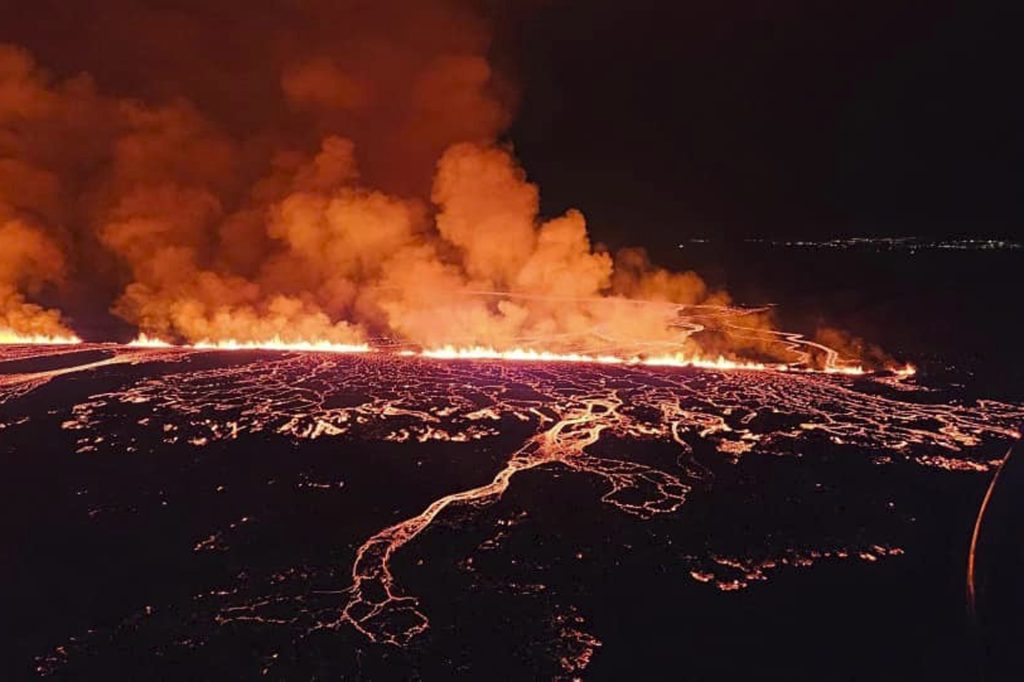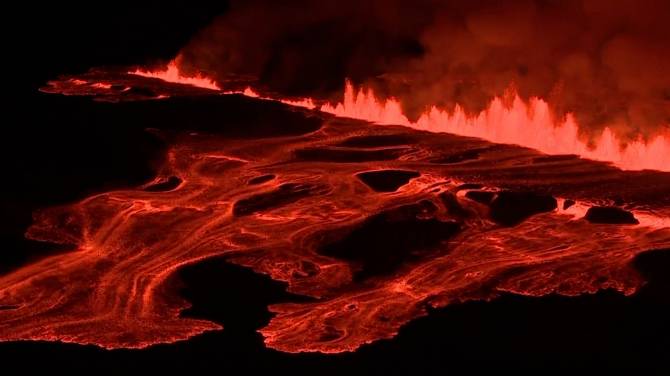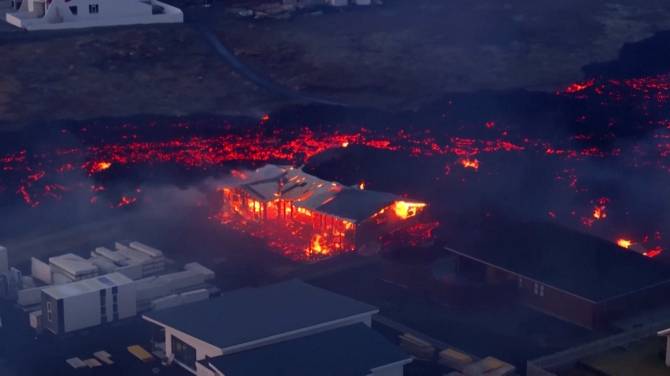A volcano in Iceland erupted on Saturday for the fourth time since December and was still spewing smoke and bright orange lava into the air early on Monday, but authorities said the infrastructure and a nearby fishing town were safe for now. Iceland The eruption was the seventh on the Reykjanes peninsula near Iceland’s capital Reykjavik since 2021 when geological systems that had lain dormant for around 800 years again became active.
Man-made barriers have successfully steered the lava away from infrastructure including the Svartsengi geothermal power plant and Grindavik, a fishing town of some 4,000 residents.
Video from public broadcaster RUV showed lava flowing a few hundred meters from the town which was evacuated during an eruption in November and again during another one in February.
Local utility HS Orka said that the defenses at Grindavik proved their value by guiding the lava flow in the intended direction and ensuring the infrastructure running to the Svartsengi power plant was intact.
Magma had been accumulating underground since the last eruption in February, leading authorities to warn of an imminent eruption.
The warning time late on Saturday was only 15 minutes before fountains of molten rock began soaring from a 3km-long (1.9 mile) fissure, roughly the same size and at the same location as the eruption in February.
Lava flows continued at a steady pace on Monday, and it was too early to project when it would end, according to Magnus Tumi Gudmundsson, professor of geophysics at the University of Iceland, speaking to RUV.
He mentioned that the lava was surprisingly stable overnight and majestic, but still only between two-to-five per cent of what it was at the beginning.
The February eruption lasted less than two days while volcanic activity continued for six months at a nearby system in 2021.
A volcano in Iceland erupted on Saturday for the fourth time since December and was still spewing smoke and bright orange lava into the air early on Monday.





